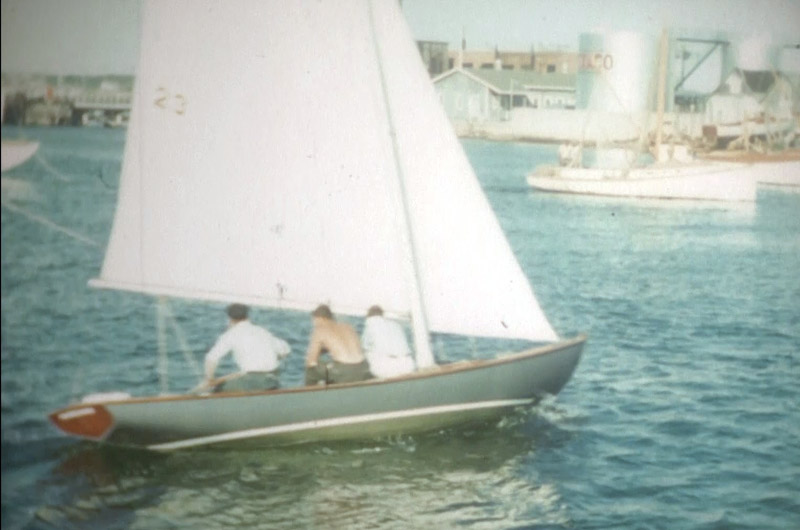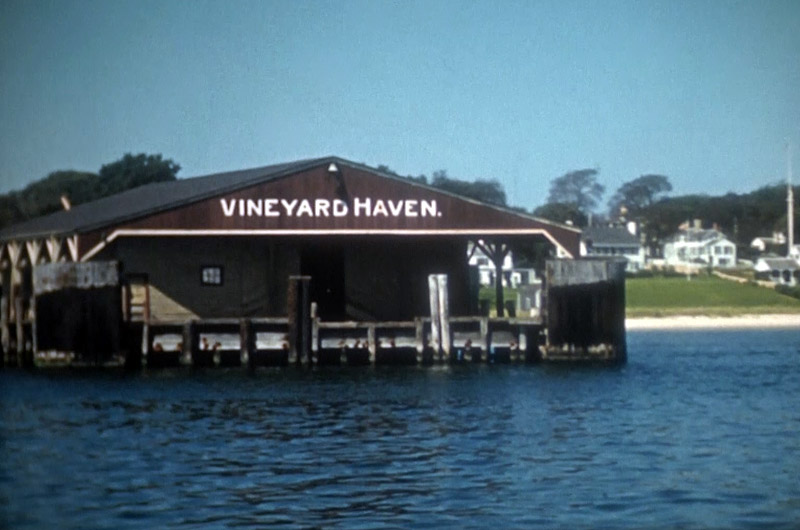They are not only the earliest movies shot in color on Martha’s Vineyard, they are some of the earliest color movies shot anywhere.
In the summer of 1933, Ruth and Ed Farrow and their young family began renting a cottage facing the outer harbor of Vineyard Haven. Ed Farrow was superintendent of several production departments at Eastman Kodak in Rochester, N.Y.
The firm was exploring how to produce color film for movie and still cameras. The latest version was lenticular color, a method that would predate Kodachrome movie film two years later.
It was serendipity that an Island summer resident was a senior executive at Kodak at precisely the moment when the company wanted to test this type of color film before it went on sale. Mr. and Mrs. Farrow brought reels of experimental lenticular color stock to the Island that summer. They also brought the specialized lenses that would allow color images to be caught on camera, true to life.
“The reason he could get so much color film material was because as [superintendent], he was almost in the position where he could dole it out to himself,” said Rod Farrow, a summer resident of Chilmark with his wife Betty. “They wanted my father to use this material, this often experimental stuff.”
The Farrows began filming harbors, hills, homes and people, and for the first time 83 summers ago Martha’s Vineyard found itself immortalized on color film. Mrs. Farrow in particular was a skilled amateur filmmaker and quickly taught herself how to shoot effectively in color.
The Gazette presents scenes from this early color footage from the Ruth and Ed Farrow Collection as part of its Historic Movies of Martha’s Vineyard project.
The couple filmed a shady Main street in Vineyard Haven, with the cars traveling both ways, and the harbor from one end to the other. They shot catboats and motor yachts departing what is now the Black Dog Wharf (the distant oil tanks across the water were silver back then) to the West Chop Light (the roof of the keeper’s house was pale pink, a chimney next door bright red.)
“The amazing thing about these 1933 Farrow lenticular Kodacolor films is that they predate the first color slide film, Kodachrome, from Kodak in 1936, so they are color movies made before there was consumer color still photography,” wrote Art Donahue of Franklin, who transferred the Farrow collection to digital files. “And because the colors are [red, green and blue] separations on prismatic black and white film, they are not color dyes and have not faded in over 80 years.”
Signal flags snap in dozens of pastel colors over a fleet of yawls and steam yachts visiting from the New York Yacht Club. Bathing suits, which in snapshots would have appeared in shades of gray, turn out to be gold and powder blue and emerald green. The bottom paint of many boats reveals itself in streaks of dried-blood red, but most of the sedans lined up along the water at Owen Park were painted the way Henry Ford said they would be: anything you want so long as it’s black.
The Farrow collection amounts to more than 13,000 feet of family film shot on the Vineyard between 1933 and 1954. The collection is part of more than 100 hours of Island footage collected so far by the historic movies project, which the Gazette began as an open-ended effort in 2012 to save and present a record of Island history that had long been left uncollected and unprotected, both on the Vineyard and on the mainland. Most of the films are home movies, but some come from unfinished documentaries or commercial efforts. The oldest is a theatrical film, Annabelle Lee, shot in the fall of 1920.

This week the Gazette begins a campaign to collect as many old Island films as possible, before they are lost or irretrievably damaged. The paper supervises the transfer of the movies by experts in the field. Owners receive digital copies, the Gazette pays for its own set and licenses the right to make them public. It researches the clips, archives them and presents highlights on its website as well as at Island theaters and other venues around the Vineyard. The next public screening of selections from the historic movies project will be at the Martha’s Vineyard Film Center in Vineyard Haven on July 20 at 7:30 p.m.
The Historic Movies of Martha’s Vineyard project saves, archives and introduces old Island films to the public. The 16 historic films presented to date are available on the Gazette website. For information about the project, or to have old Island films transferred digital files, contact historicmovies@mvgazette.com. (To avoid damage, please do not run old films through a projector.)









Comments (6)
Comments
Comment policy »